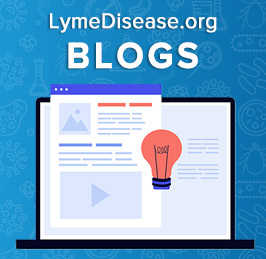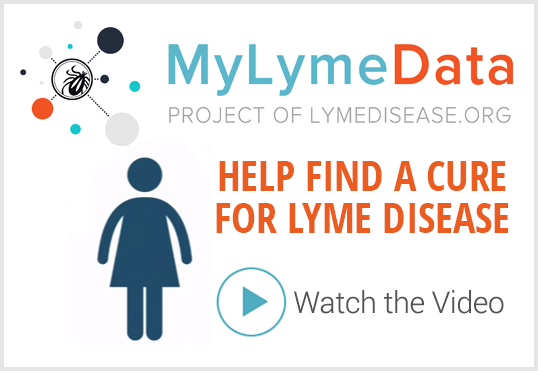NEWS: Lyme disease costs nation $1.3 billion to treat annually

Johns Hopkins scientists say the prolonged impact of the tick-borne illness in some patients is greater and more widespread than previously understood
Press release from Johns Hopkins Bloomberg School of Public Health, Feb. 5, 2015:
Newswise — Lyme disease, transmitted by a bite from a tick infected by the Borrelia burgdorferi bacteria, had long been considered easy to treat, usually requiring a single doctor’s visit and a few weeks of antibiotics for most people.
But new research from the Johns Hopkins Bloomberg School of Public Health suggests that a prolonged illness associated with the disease is more widespread and serious in some patients than previously understood. With an estimated 240,000 to 440,000 new cases of the tick-borne illness diagnosed every year, the researchers found that Lyme disease costs the U.S. health care system between $712 million and $1.3 billion a year — or nearly $3,000 per patient on average — in return doctor visits and testing, likely to investigate the cause of some patients’ lingering symptoms of fatigue, musculoskeletal pain and memory problems. These visits come after patients have finished their original course of antibiotics.
Some doctors call those persistent symptoms post-treatment Lyme disease syndrome (PTLDS); others call it chronic Lyme disease. Still others attribute the complaints of fatigue, headaches and memory problems to the hum of daily life, the aches and pains that come with aging. At the core of the controversy is whether PTLDS can be a severe and chronic condition that requires more than reassurance and symptomatic therapy. While a blood test can confirm Lyme disease, there is no definitive test for PTLDS and there are no approved or proven treatments. It’s a controversial topic in medicine, the Hopkins researchers say.
A report on the findings is published online Feb. 4 in the journal PLOS ONE.
“Our study looks at the actual costs of treating patients in the year following their Lyme diagnosis,” says study author Emily Adrion, MSc, a PhD candidate in the Department of Health Policy and Management at the Johns Hopkins Bloomberg School of Public Health. “Regardless of what you call it, our data show that many people who have been diagnosed with Lyme disease are in fact going back to the doctor complaining of persistent symptoms, getting multiple tests and being retreated. They cost the health care system about $1 billion a year and it is clear that we need effective, cost-effective and compassionate management of these patients to improve their outcomes even if we don’t know what to call the disease.”
Adrion and her colleagues looked at medical claims data from approximately 47 million people enrolled in a wide range of commercial health insurance plans in the United States between 2006 and 2010. The researchers ended up analyzing 52,795 cases of Lyme disease patients under the age of 65 who had been treated with antibiotics within 30 days of a Lyme disease test order and/or Lyme disease diagnosis. The data were compared to nearly 264,000 other similar people with no evidence of Lyme disease exposure.
The researchers found that, on average, people with Lyme disease cost the system $2,968 more than matched controls. They had 87 percent more visits to the doctor and 71 percent more visits to the emergency room within the year following diagnosis. Those with Lyme disease were nearly five times more likely to have any PTLDS-related diagnosis — fatigue, nerve pain, joint pain, cognitive troubles — within that year and were 5.5 times more likely to have a diagnosis of debility and excessive fatigue.
Among those with Lyme disease, having one or more PTLDS-related diagnosis was associated with $3,798 more in health care costs as compared to those with no post-treatment symptoms.
Lyme disease is named after the town in Connecticut where it was first recognized in 1975. It now hits its peak in June and July and is found from Maine to Virginia along the East Coast of the United States. The tick causes a skin reaction that resembles a bulls-eye or spider bite. If left untreated, Lyme disease may lead to neurologic and rheumatic symptoms weeks or months later. Treatment with the antibiotic doxycycline is associated with a more rapid resolution of early signs of infection and prevention of the majority of later symptoms, the researchers say.
Still, some patients report symptoms lasting for weeks, months or years beyond completion of the original antibiotic regimen. There is no approved therapy for these patients and the magnitude of the problem in the U.S. population has never been systematically studied. The Centers for Disease Control and Prevention estimates 10 to 20 percent of those treated for Lyme disease with the recommended two-to-four week course of antibiotics continue to have symptoms. But, in the new study, the researchers found that more than 63 percent of those treated for Lyme disease had at least one PTLDS-related diagnosis — a rate 36 percentage points higher than those who did not have Lyme disease.
The study’s lead author John Aucott, MD, an assistant professor of rheumatology at the Johns Hopkins University School of Medicine, says it does no good to keep debating the existence of long-term problems related to Lyme disease while people are suffering a debilitating illness. And he says that increasing awareness of potential complications is crucial to avoid misdiagnosis and unnecessary medical testing.
“These patients are lost,” he says. “No one really knows what to do with them. It’s a challenge, but the first thing we need to do is recognize this is a problem. There’s not a magic pill. These patients already got the magic pill and it didn’t work.”
“Health care costs, utilization and patterns of care following Lyme disease” was written by Emily Adrion, MSc; John Aucott, MD; Klaus Lemke, PhD; and Jonathan P. Weiner, DrPH.
This research was funded by a grant from the Lyme Disease Research Foundation.
Click here to read the PLOS One article online.




















I have lived in rural North coast CA for roughly 25 years. Over that time I was bitten by ticks regularly but was unaware of the risk and consequences of Lyme. About 10 years ago I began suffering from a variety of neurological problems such as numbness and memory problems, extreme relapsing fatigue, body pain of such severity I had to retire. I was insured by Kaiser Permanente were I visited a variety of specialists who made what seemed like a lame effort to diagnose me. I had recalled having both tick bites and rashes so requested a Lyme test. They performed “an unknown” and “unexplained” test and said I was negative. I spent a great deal of time and money outside Kaiser trying to get a competent diagnosis. When I tested positive by IGenex, Kaiser rolled their eyes and their attitude toward a 40 year patient changed.
Since it seemed Lyme was a high probability, I began researching and discovered the unbelievable controversy. Now I understood why Kaiser had treated me the way they did. I was laughed by one of their neurologists after explaining why I thought Lyme was likely. I arranged to be tested by multiple labs so I could see for myself if the tests were unreliable myself. I experienced a CDC 5/10, 4/10, 3/10 and 0/10 IgG antibody Western Blot. But I also arranged a C6 peptide from 3 different labs which were all positive. So I had a many bite, rash and exposure history. I had both positive and negative CDC 2 tiered tests and 3 positive C6’ at 3 different labs. At least 2 utilized the well known Immunetics test kit that is in consideration by the CDC as a tiered replacement. It has a wider genotype performance than the 2 tiered test.
Kaiser is the most prominent insurer in CA and when I asked about my positive C6 positives, a ID specialist was not aware of it and a neurologist laughed claiming it was some “home brew” invalid test. None of the Kaiser doctors even considered PTLDS and it seemed none cared. So if you live in CA, beware of Lyme and Kaiser. Even though the C6 is thoroughly validated and accepted by the CDC and my symptoms and tick bite history all pointed at Lyme, I was unable to find one doctor at Kaiser willing to even consider it and seemed to avoid doing any differential diagnoses once I mentioned it. So its clear if you live in Northern CA and have Lyme, you will end up paying for all diagnosis effort once its mentioned.
Why is LymeDisease.org promoting the CDC’s erroneous PTLDS theory? This serves only to discourage patients with Chronic Lyme Disease from seeking effective long-term antibiotic treatment in favor of paying for expensive prescriptions for numerous symptoms. If symptoms remain, it’s because the bacteria remain. That’s the research the CDC, NIH, and IDSA have been ignoring. Are you also ignoring the research and clinical evidence? Is your organization now taking up the CDC’s mission to promote Big Pharma’a interests over the health of Lyme patients? Why wasn’t there more info in your article about the “controversial” aspects? You have done Lyme sufferers a great disservice with this CDC-mouthpiece.